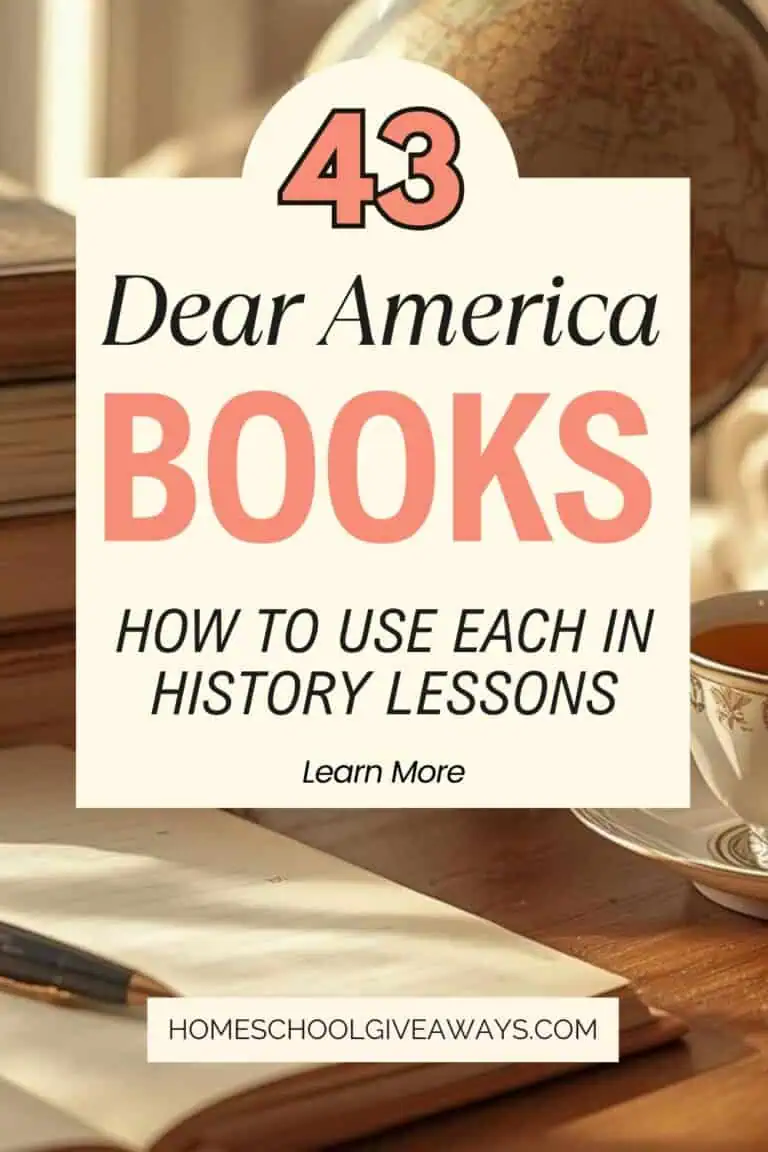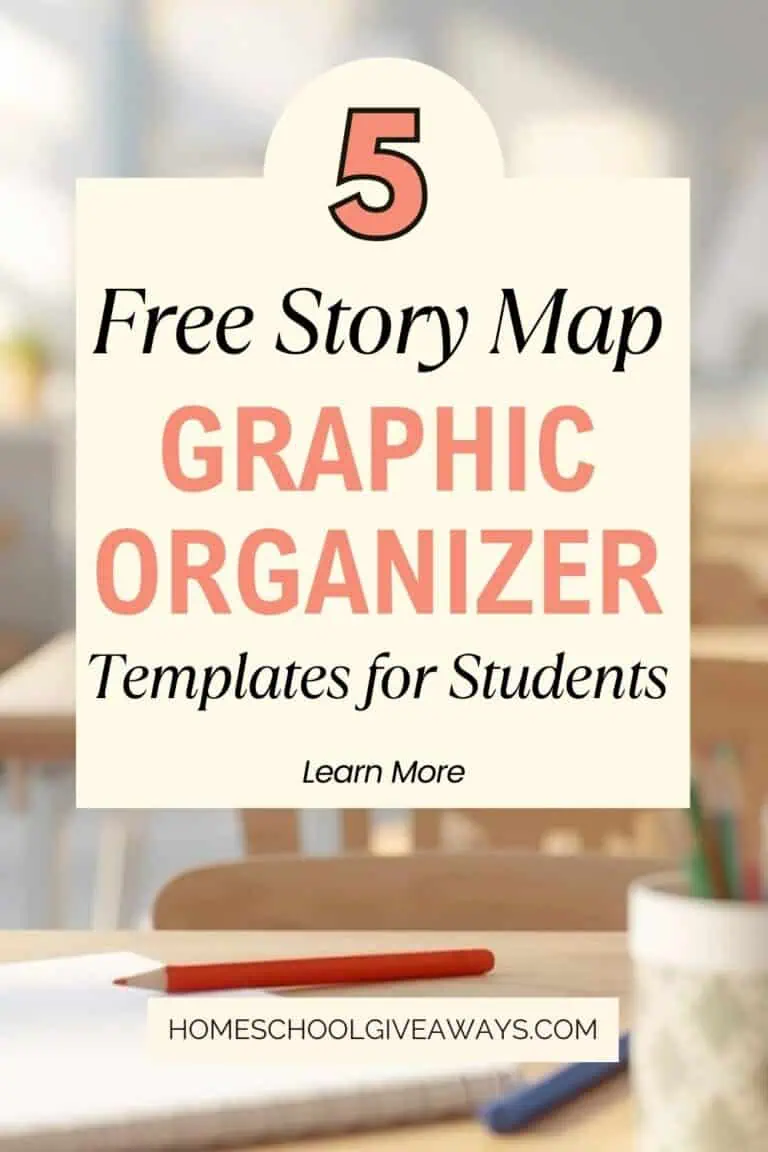Louisa May Alcott Books | Character Lessons for Kids & Teens
Published:
October 29, 2025

Contributor:
Charis King
Disclosure: This post may contain affiliate links, meaning if you decide to make a purchase via my links, I may earn a commission at no additional cost to you. See my disclosure for more info.
Louisa May Alcott books have inspired generations of readers, and they still offer so much for families today. From teaching lessons in kindness, courage, and perseverance to sparking creativity and thoughtful discussion, her stories are perfect for homeschool learning.
Whether you’re diving into the March sisters’ adventures, exploring tales of independence and growth, or discovering her lesser-known stories, this list of books give you countless opportunities to weave character-building lessons into everyday reading.

The Little Women Books and the March Family Stories
These are Alcott’s most beloved works, following the March girls as they grow up, face challenges, and discover what truly matters in life. Alcott explores family bonds, personal ambition, and the lessons that come from love, loss, and making choices.
This first book follows Meg, Jo, Beth, and Amy March as they navigate childhood and adolescence and hard times during the Civil War, learning about love, responsibility, and the value of family. Alcott captures their distinct personalities and struggles, showing how everyday challenges shape character and growth. Recommended for ages 10–16+.
Springboard Learning Ideas
- Create a Character Growth Chart for each sister, noting her key lessons and turning points.
- Encourage your student to write a short story or journal entry inspired by one of the sister’s experiences.
The March sisters enter adulthood and face marriage, careers, and personal ambitions. Alcott examines how their dreams evolve, how values are tested, and how love and perseverance help them navigate life’s complexities. Recommended for ages 12–17+.
Springboard Learning Ideas
- Compare a challenge faced by one of the sisters to a modern-day situation and discuss how your student might handle it.
- Track each sister’s growth through a timeline or life map that highlights major events and lessons learned.
Jo March and her husband open Plumfield, a school where the students learn about kindness, responsibility, and character as much as academics. The lively stories of the boys and girls under Jo’s care highlight teamwork, problem-solving, and personal growth. Recommended for ages 9–14.
Springboard Learning Ideas
- Have students create a Plumfield rulebook illustrating the values and lessons they think are most important.
- Encourage a short story or play in which students imagine an adventure or moral dilemma for one of Plumfield’s children.
Years later, the Plumfield students are grown, facing the challenges of adulthood. Alcott explores ambition, loyalty, and integrity as the next generation navigates careers, relationships, and personal responsibility. Recommended for ages 11–16+.
Springboard Learning Ideas
- Write a letter or journal entry from the perspective of a grown Plumfield student reflecting on lessons learned.
- Compare a character’s career or life choice to a real-world scenario, discussing decision-making and consequences.
Step Inside Alcott’s World
Curious about the real-life New England home that inspired the March sisters? American author Louisa May Alcott lived at the Orchard House with her father, Amos Bronson Alcott, her mother, Abigail May Alcott, and her sisters, Anna, Elizabeth, May, and Abigail. Both the house and her family life shaped the warmth, adventures, and values in the March stories. You can visit the Orchard House in person, to see the rooms, furniture, and personal artifacts that bring Alcott’s world to life.
Stories About Home, Family, and Growing Up
These stories draw from Alcott’s own experiences and everyday life, highlighting character growth, family relationships, and moral lessons. They’re perfect for exploring independence, kindness, and creativity in relatable, realistic settings.
Dolly Milton, a spirited and sincere young girl from a small town, navigates city life and social expectations when she visits wealthy relatives. Alcott explores honesty, humility, and the challenge of staying true to oneself amid changing surroundings. Recommended for ages 10–15.
Springboard Learning Ideas
- Compare Dolly’s values to those of her city cousins and discuss how personal integrity shapes relationships.
- Write a letter or journal entry from Dolly’s perspective, reflecting on her experiences adjusting to new environments.
Rose Campbell, an orphaned teenager, learns to navigate family dynamics, health, and growing independence with the help of her seven lively cousins. Alcott highlights personal growth, responsibility, and the importance of supportive relationships in shaping character. Recommended for ages 9–14.
Springboard Learning Ideas
- Create a family tree of the cousins and note how each influences Rose’s growth.
- Discuss a personal challenge and create a plan showing how friends or family could provide support, inspired by Rose’s story.
Rose Campbell continues her journey into adulthood, balancing personal ambition, romantic relationships, and social responsibilities. Alcott explores maturity, decision-making, and the rewards of thoughtful, ethical choices in everyday life. Recommended for ages 11–16+.
Springboard Learning Ideas
- Map Rose’s major life choices and discuss alternative paths and consequences.
- Write a short story imagining a modern-day Rose in Bloom facing similar moral decisions.
A group of children discovers friendship, adventure, and personal growth while living near the lilac bushes. Alcott highlights courage, kindness, and resourcefulness as the children learn to navigate small but meaningful challenges together. Recommended for ages 8–12.
Springboard Learning Ideas
- Plant lilacs or another flower and write short stories inspired by the garden setting.
- Act out one of the children’s adventures as a short skit to explore character decisions and teamwork.
Jack and Jill, two village children, experience everyday adventures and moral challenges that teach lessons about honesty, empathy, and cooperation. Alcott explores how ordinary experiences can shape character and strengthen community bonds. Recommended for ages 8–12.
Springboard Learning Ideas
- Create a village map showing where Jack and Jill’s adventures take place, noting lessons learned at each location.
- Write a modern version of one of their adventures, highlighting how empathy and cooperation resolve conflicts.
Alcott Short Story Collections
These collections bring everyday adventures, moral lessons, and whimsical storytelling to life. Alcott shows how small actions, kindness, and courage can shape character, making these stories ideal for read-alouds and discussion-based learning.
Each story follows magical flowers and playful creatures in charming fairy tales that teach lessons about honesty, kindness, and empathy. Alcott explores the ways small actions and thoughtful choices can ripple through a community, blending whimsy with gentle moral reflection. Recommended for ages 6–10.
Springboard Learning Ideas
- Press flowers and write a short fable inspired by their personalities or traits.
- Create a miniature fairy garden to imagine scenes from the stories and spark creative storytelling.
A proud royal family encounters challenges that test their patience, humility, and compassion. Through imaginative adventures and clever problem-solving, Alcott emphasizes the importance of empathy, forgiveness, and personal growth. Recommended for ages 8–12.
Springboard Learning Ideas
- Craft a paper family crown labeled with positive character traits to discuss virtues.
- Write a short story or comic illustrating how small acts of kindness can resolve conflict.
Children navigate everyday challenges inspired by classic proverbs, learning lessons about honesty, patience, and moral responsibility. Alcott explores how reflection and thoughtful choices shape personal character and social relationships. Recommended for ages 9–13.
Springboard Learning Ideas
- Turn a favorite proverb into a comic strip or illustrated mini-play.
- Create a Proverb Jar to draw a weekly story idea and discuss its lesson.
Morning-Glories, and Other Stories
Children face small but meaningful struggles that test their patience, courage, and kindness. Alcott highlights how perseverance, empathy, and creativity help characters grow, teaching readers that everyday actions carry lasting impact. Recommended for ages 8–12.
Springboard Learning Ideas
- Plant morning glories and discuss how growth mirrors the characters’ personal development.
- Decorate flowerpots with quotes or lessons from the stories to connect reading to hands-on creativity.
Aunt Jo’s Scrap-Bag, Vols. 1-6
These stories feature children learning from everyday adventures, mischief, and moral challenges. Alcott emphasizes creativity, honesty, and courage, showing how ordinary choices can shape character and strengthen family and community bonds. Recommended for ages 8–13.
Springboard Learning Ideas
- Create a family scrap-bag journal filled with short stories, drawings, or reflections.
- Act out a favorite story as a puppet show or skit to explore characters’ decisions and emotions.
On cold winter evenings, children gather around a spinning wheel to hear tales of courage, cleverness, and integrity. Alcott celebrates storytelling itself as a means of teaching lessons about empathy, resourcefulness, and personal growth. Recommended for ages 8–13.
Springboard Learning Ideas
- Host a storytelling night where each family member shares a short story inspired by personal experiences.
- Try a simple weaving or yarn craft while reading, connecting the story to hands-on creativity.
Girls encounter challenges that test their kindness, ingenuity, and courage. Alcott emphasizes moral growth and empathy, showing how thoughtful actions, creativity, and determination can positively impact others. Recommended for ages 10–14.
Springboard Learning Ideas
- Make a garland of kindness by writing acts of generosity on paper flowers and linking them together.
- Create a mini book of Gifts of the Heart, recording ways to serve others in daily life.
Young readers can follow the adventures of talking animals and brave children, enjoying imaginative fantasy stories that teach problem-solving, empathy, and creativity. Alcott shows how curiosity and compassion guide children through challenges, making everyday moments meaningful. Recommended for ages 8–12.
Springboard Learning Ideas
- Write and illustrate a short Lulu-style story with a moral lesson.
- Host a family story hour, acting out one of the tales with props or simple costumes.
Print & Go: FREE Book Tracker
Before moving on to her adventurous thrillers, don’t forget to download our printable book tracker.

Louisa May Alcott Book Tracker
Encourage reading of classical literature with this free tracker. Students can record the date they read each book, jot down a quick thought, and color in up to five stars to rate each story. It’s a simple way to keep track of the the books read each year.
Thrillers, Adventure, and Gothic Tales
Written under her pen name A. M. Barnard, these stories reveal Louisa May Alcott’s adventurous, daring, and sometimes dark side. Full of suspense, secrets, and clever characters, they are perfect for older teens or anyone who loves a thrilling story.
Behind a Mask; or, A Woman’s Power
A mysterious young woman poses as a governess to gain access to a wealthy family, secretly manipulating events to achieve her goals. As she balances deception with ambition, readers see how intelligence and courage can shape destiny. The story is full of suspense, clever twists, and questions about honesty and power. Recommended for ages 14–18+.
Springboard Learning Ideas
- Create a hidden identity mask craft. Write character traits or secrets on the inside and reveal them like the story unfolds.
- Keep a detective notebook while reading. Track clues, character motives, and make your own predictions about what will happen next.
Valeria pursues independence while being relentlessly pursued by a controlling suitor. She flees across cities, narrowly escaping danger at every turn. Along the way, Valeria’s courage, cleverness, and determination shine through in this suspenseful romance-thriller. Recommended for ages 14–18+.
Springboard Learning Ideas
- Plot the character’s journey on a large map or timeline using sticky notes or string to visualize her escapes.
- Discuss or journal about modern-day examples of courage in difficult situations.
Pauline’s Passion and Punishment
Pauline falls for a charming but reckless suitor, and her choices spark a series of misunderstandings and moral challenges. She faces the consequences of impulsive decisions, learning lessons about honesty, responsibility, and self-control. The story blends drama, suspense, and emotional growth. Recommended for ages 14–18+.
Springboard Learning Ideas
- Rewrite one key scene from a different character’s perspective to explore empathy.
- Create a choice tree poster showing the moral dilemmas Pauline faces and the possible consequences of each decision.
This tale follows V. V., a young woman caught in a web of romance, secrets, and schemes. Each character pursues their own plans, leading to surprises, moral tests, and tension-filled encounters. The story explores loyalty, ambition, and the cleverness needed to navigate tricky situations. Recommended for ages 14–18+.
Springboard Learning Ideas
- Make a character web using string and cards to connect characters, motives, and secrets visually.
- Write a short modern adaptation of a key scene, imagining how it would happen today.
Maurice Treherne finds himself drawn into mysterious events at a crumbling abbey, facing secret dangers and moral temptations. Shadows, hidden motives, and suspenseful twists create a gothic atmosphere while exploring courage, integrity, and the choices that define a person. Recommended for ages 13–17+.
Springboard Learning Ideas
- Design a simple mystery map showing the story’s key locations and events.
- Create a shadow puppet scene of a suspenseful moment to capture the story’s gothic tension.
A young protagonist encounters secrets, hidden dangers, and eerie encounters that test courage and quick thinking. The suspenseful plot keeps readers engaged while highlighting bravery, empathy, and the cleverness needed to navigate mysterious situations. Recommended for ages 13–17+.
Springboard Learning Ideas
- Use drawing or sketching to depict a suspenseful scene, focusing on shadows and light to enhance the eerie mood.
- Make a courage checklist: list 3 moments in the story where the character acts bravely. Then journal about a time you acted bravely despite being scared.
Realistic and Reform-Themed Stories
These stories draw from Alcott’s own life and her interest in social reform, women’s suffrage and meaningful work. They’re perfect for discussion-based learning with older students who are beginning to think about purpose, courage, and calling.
Christie Devon sets out to find her purpose in the world, taking on a variety of jobs-from actress to governess to nurse-before discovering what true fulfillment means. Alcott uses Christie’s journey to explore women’s independence, meaningful work, and the importance of integrity in every season of life. Recommended for ages 13–17+.
Springboard Learning Ideas
- Create a career chart showing Christie’s different jobs and what she learns from each one. Discuss how experiences can shape character.
- Write a reflection journal: what kind of work feels meaningful to you, and why?
Based on Alcott’s own experiences as a Civil War nurse in a Union hospital, this story follows Tribulation “Trib” Periwinkle, a spirited young woman who volunteers to care for wounded soldiers. Her letters are full of humor, heartbreak, and insight, offering a touching look at compassion, service, and courage in hardship. Recommended for ages 12–16+.
Springboard Learning Ideas
- Research Civil War medicine and create a short report or poster about how nursing changed during the war.
- Write a thank-you note or create a care package for a local hospital or veterans’ group, connecting kindness to action.
Sylvia Yule’s impulsive marriage sets off a chain of emotional and moral struggles as she searches for peace and balance in her life. Alcott explores love, personal growth, and the challenge of following your conscience when emotions pull in different directions. Recommended for ages 13–17+.
Springboard Learning Ideas
- Create a decision map showing Sylvia’s major choices and how each one shapes her growth.
- Discuss or journal about how emotions can cloud judgment and how reflection can help with better decision-making.
Kate faces a difficult personal decision that tests her values, independence, and sense of responsibility. Alcott explores how young women navigate societal expectations, make moral choices, and develop self-confidence. Recommended for ages 10-14.
Springboard Learning Ideas
- Discuss or journal about a time you had to make a difficult choice and what you learned from it.
- Create a decision map showing Kate’s options and possible outcomes, then imagine a modern version of the story.
Classic Christmas and Thanksgiving Stories
These cozy tales celebrate family, gratitude, and the joy of giving. Alcott explores the ways everyday moments, kindness, and generosity can turn ordinary celebrations into meaningful experiences.
A family navigates the challenges and joys of preparing for Thanksgiving, learning to balance expectations, mishaps, and traditions. Alcott explores gratitude, generosity, and the warmth of shared family moments. Recommended for ages 8–12.
Springboard Learning Ideas
- Host a family gratitude activity where each person shares something they are thankful for and decorates a gratitude card.
- Cook a simple dish inspired by the story and discuss how preparing food can strengthen family connections.
A little girl imagines a magical Christmas and discovers that kindness and thoughtful actions can bring dreams to life. Alcott explores generosity, imagination, and the joy of giving in everyday moments. Recommended for ages 7–12.
Springboard Learning Ideas
- Write or illustrate a personal Christmas dream story highlighting acts of kindness.
- Create a dream box of small generosity challenges to complete during the holiday season.
Through a series of festive tales, children and families learn that the spirit of Christmas comes from empathy, joy, and sharing with others. Alcott explores moral growth and the value of simple pleasures during the holidays. Recommended for ages 8–13.
Springboard Learning Ideas
- Illustrate your favorite story from the collection and share it as a handmade holiday card.
- Organize a holiday scavenger hunt with clues that encourage acts of kindness or gratitude.
Posthumous & Collected Works
These works, published after Alcott’s death or compiled from her letters and early stories, give readers a glimpse into her adventurous, imaginative, and thoughtful side. They are ideal for exploring character, creativity, and history through literature.
Lost in a Pyramid, or The Mummy’s Curse
A thrilling adventure unfolds when a young explorer becomes trapped in an Egyptian pyramid. Suspense, clever problem-solving, and encounters with danger drive the story, highlighting courage, curiosity, and perseverance in unfamiliar circumstances. Recommended for ages 12–16+.
Springboard Learning Ideas
- Create a simple pyramid map tracing the character’s path and key events to visualize problem-solving under pressure.
- Write short adventure notes from the explorer’s perspective.
Children journey to a fantastical land where candy grows like plants and every adventure tests creativity, generosity, and imagination. Alcott explores wonder, resourcefulness, and the playful joys of discovery. Recommended for ages 7–11.
Springboard Learning Ideas
- Design your own imaginary land with maps, illustrations, or a diorama inspired by the story.
- Invent an edible recipe or craft inspired by the candy in the story, combining creativity with hands-on learning.
A quiet, observant woman touches the lives of her neighbors through small acts of kindness during the holiday season. Alcott celebrates empathy, thoughtfulness, and the quiet ways one person can make a difference. Recommended for ages 8–12.
Springboard Learning Ideas
- Make a kindness calendar for the holiday season, planning small acts to help others each day.
- Write a short story or journal entry imagining the life of someone who quietly changes the world around them.
Life, Letters, and Journals of Louisa May Alcott
This collection offers an intimate look at Alcott’s thoughts, experiences, and creative process. Through letters and journal entries, readers witness her curiosity, ambition, humor, and reflections on family, work, and society. Recommended for ages 13–17+.
Springboard Learning Ideas
- Start your own personal journal or letter-writing project, inspired by Alcott’s example, reflecting on daily experiences or lessons learned.
- Compare entries from Alcott’s life to your own or a family member’s stories, and create a then-and-now timeline of experiences and observations.
Closing Thoughts
Louisa May Alcott didn’t just tell stories, she gave us roadmaps for growing up well. Her books invite you to think deeply, live simply, and keep learning. Whether you’re sharing Little Women by the fire or diving into Hospital Sketches with your teen, her lessons in character and virtue still shine.
You can sprinkle these books throughout your homeschool year, using each one as a springboard for writing, discussion, or family reflection. And who knows? You might just find that Alcott’s lessons for her characters become gentle reminders for your own heart too.







